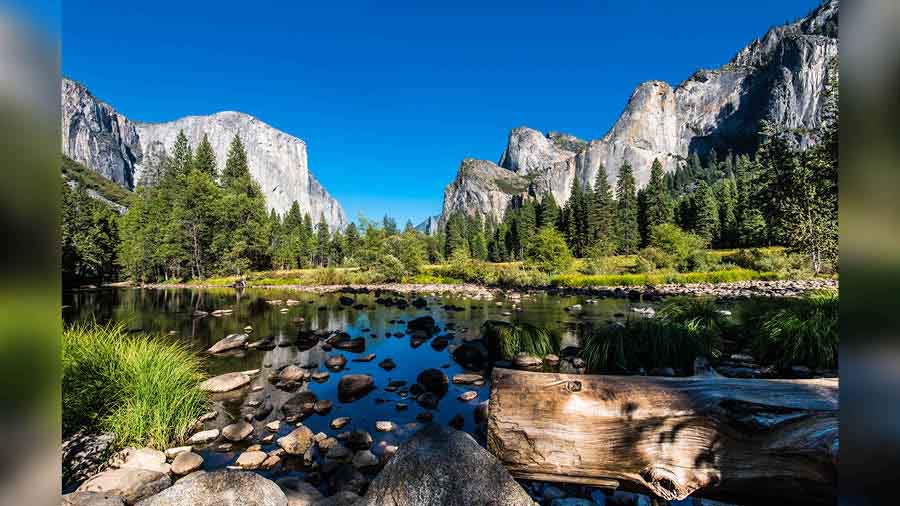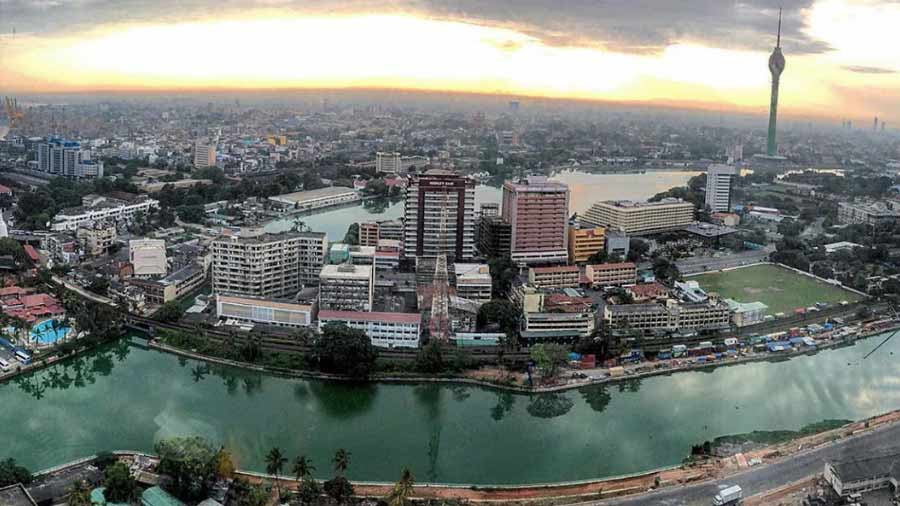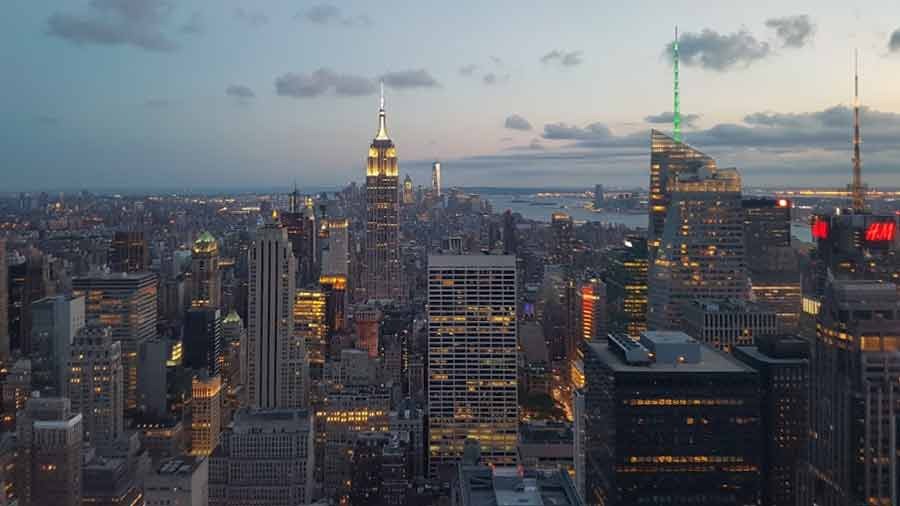In 1864, US President Abraham Lincoln signed the Yosemite Grant, making it the first instance of a park being set aside for preservation and public use. It set the stage for America’s National Park Service, now a network of over 400 National Parks across the US, which received more than 311 million visitors in 2022 alone. It was here that America’s romance with the great outdoors started. It was certainly where I fell in love with the scale and awesomeness of America’s National Parks – Yosemite was the first major park I visited in the US.
UNESCO World Heritage Site
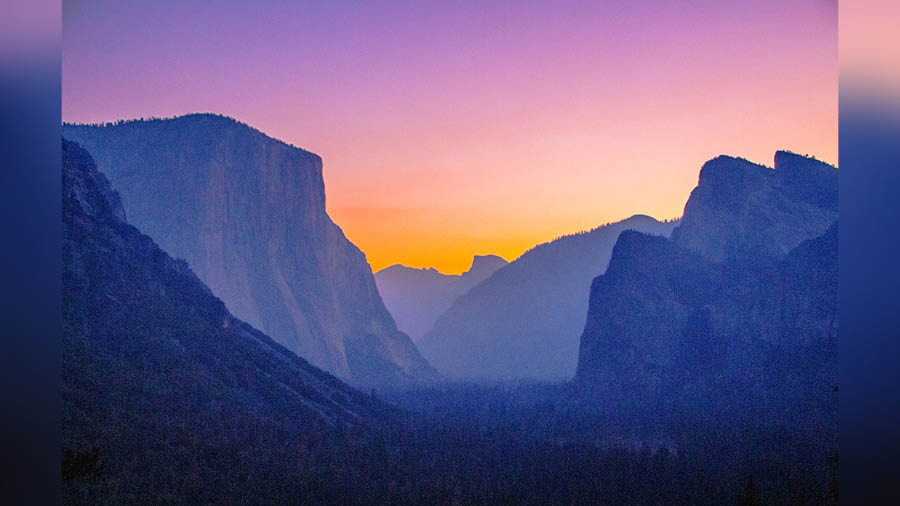
The golden hour at the park Unsplash
Yosemite is spread over 3,000 sq. kms in northern California, reaching the western slopes of the Sierra Nevada Mountains. Glaciations over millions of years have contributed to Yosemite’s unique geologic features – soaring cliffs, dramatic domes, waterfalls with spectacular drops and a network of over 300 lakes. The park’s granite hills are another feature that sets Yosemite apart – granite also underlies most of the park and is manifested in partial domes and cliffs. It’s this unique landscape that catapulted Yosemite into the UNESCO World Heritage list in 1984.
The Gold Rush is not officially over here
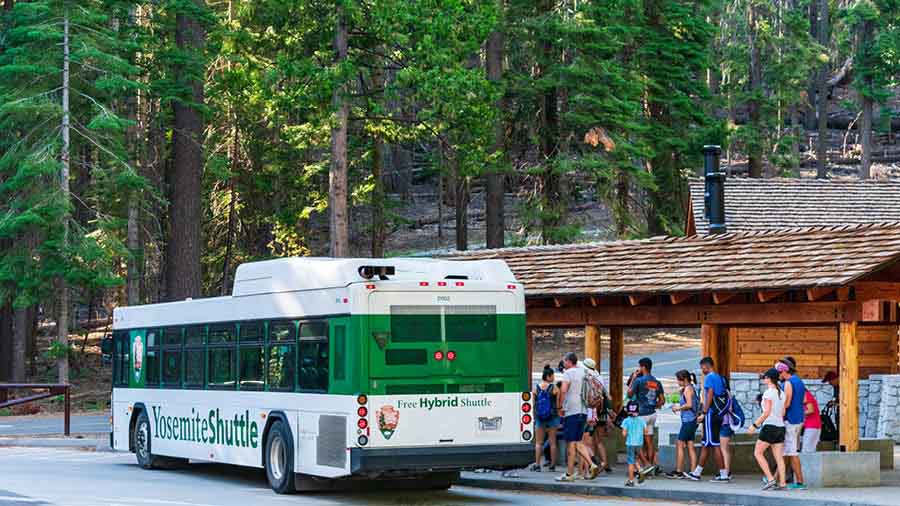
Tourists board a bus to the park from Mariposa Shutterstock
I entered Yosemite through Mariposa from the West Gate. Mariposa town was one of the original boom towns during the California Gold Rush during the 1850s. You can still buy gold pans, dredging equipment and metal detectors here, just in case you want to try your hand at ‘prospecting’ for gold. Quite a few visitors to Yosemite use Mariposa not just as their gateway, but also their base and then make day trips into Yosemite. Large parts of the town have been unaltered since the Gold Rush. I might not have struck gold, but my search for an all-American meal was a lot easier. There are a bunch of restaurants in Mariposa that serve authentic American style grills.
The Shining

The Ahwahnee Hotel, a local institution that dates back to the 1920s Shutterstock
I’d recommend a stop at The Ahwahnee Hotel, a local institution that dates back to the 1920s and has hosted heads of state like John F Kennedy and Queen Elizabeth II. The Ahwahnee finds a delicate balance between architectural styles that include Art Deco, Native American and Middle Eastern — whether it’s the unique stencilling, woodwork, rich tapestries or lighting fixtures. But it’s real claim to fame was that its interiors were used as the template to create the sets of the Overlook Hotel in Stanley Kubrick’s horror flick – The Shining.
The whole of the National Park is impossible to explore over one weekend. Like most of Yosemite’s 4.4 million annual visitors (It is the fifth-most-visited National Park in the US) I opted to start my Yosemite discovery at Yosemite Valley, a seven-mile long, mile-wide canyon sliced by a river, deepened and widened by glacial action. The park authorities operate a network of shuttles that crisscross the key locations making navigation particularly easy for first time visitors.
Shimmering waterfalls
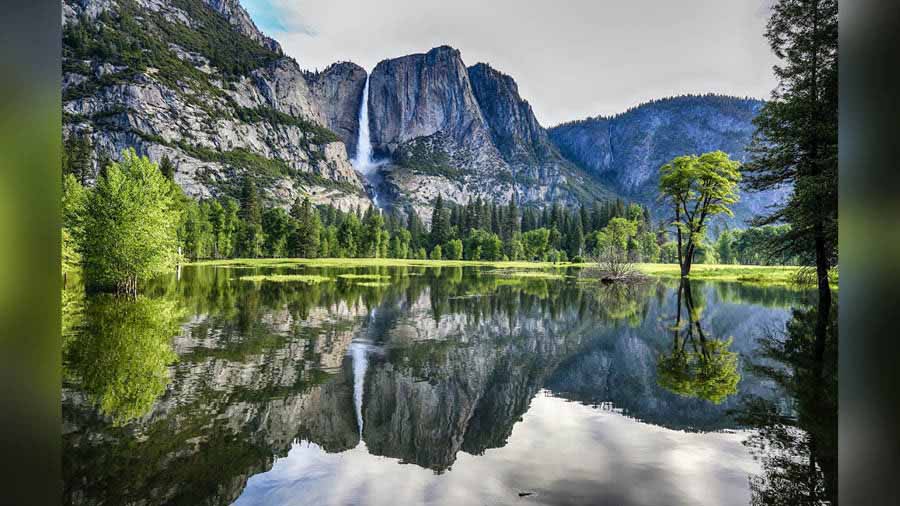
The Yosemite Falls Unsplash
Yosemite Valley’s biggest draw is its cluster of waterfalls. They tend to be seasonal though; I’d recommend visiting here in spring when the snowmelt takes place. The Yosemite Falls, among the world’s 20 tallest waterfalls, features a distinctive ice cone at the base of the upper fall during winter and is usually in full flow from April through June. It’s made up of actually three separate waterfalls – Upper Yosemite Fall, the Middle Cascades and Lower Yosemite Fall — that combine to rise to a formidable height of more than 2,400 feet. The Sentinel Falls on the Valley’s south side features multiple cascades that range from 50 to 500 feet, making this one of Yosemite’s must-see sights.
Mirror Lake
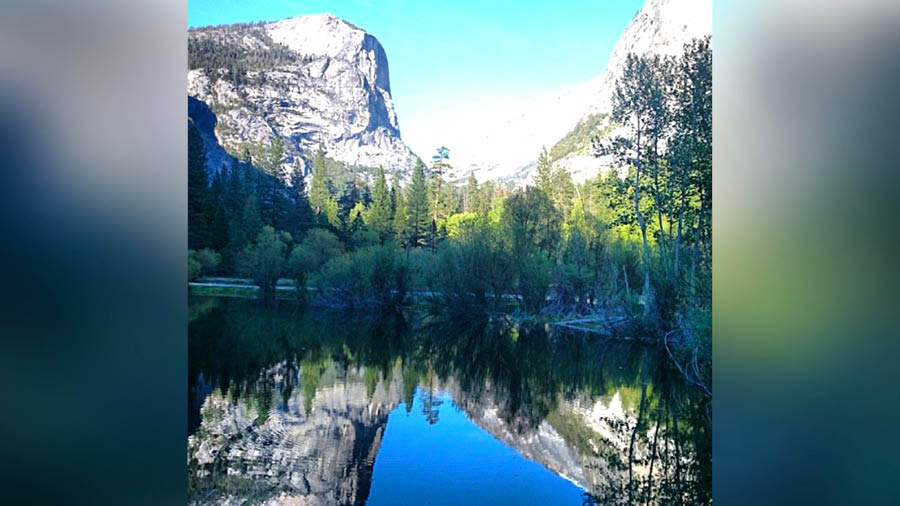
Mirror Lake is a favourite with Instagrammers Ashwin Rajagopalan
Yosemite’s rock formations caught my attention almost from the moment I set foot in the park. Half Dome is Yosemite’s iconic symbol and rises above 5,000 feet from the valley floor. It’s a favourite with rock climbers, although I’d recommend the relatively easier hike option if you are seeking an adrenaline rush. I opted for the one-hour trail to Mirror Lake that offers close up views of the Half Dome. This small, seasonal lake is a remnant of a large glacial lake that covered most of Yosemite Valley thousands of years ago. Mirror Lake is a favourite with Instagrammers aiming to capture the perfect reflection of Half Dome on a clear day, when the waters are still. My two hour-long trek was made eventful thanks to a bear sighting – bears are not an uncommon sight around the valley.

A close-up view of Half Dome Shutterstock
El Capitan is the other magnet for experienced rock climbers; it is the world’s largest granite monolith, rising to more than 3,000 feet. Yosemite Valley has some viewing points that allow you to capture some panoramic views and the giant sequoia trees. Do make a stop at Tunnel View, my pick of all the scenic vantage points. It is on the southern access to the park and offers views of El Capitan and Half Dome. Yosemite makes for the perfect weekend getaway from most cities in California and is the perfect starting point to explore America’s National Park Service with its rugged appeal and magnificence.
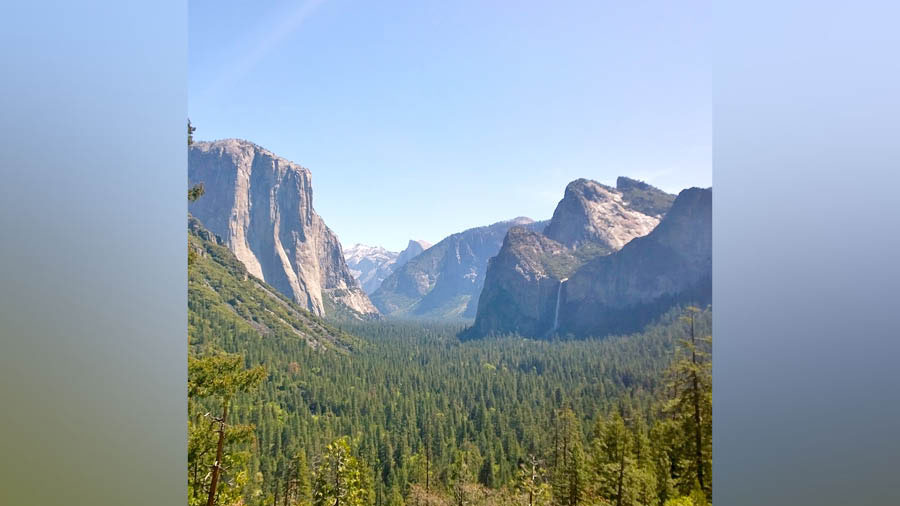
Tunnel View, a top pick of all the scenic vantage points Ashwin Rajagopalan
